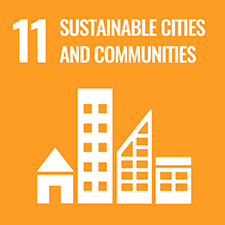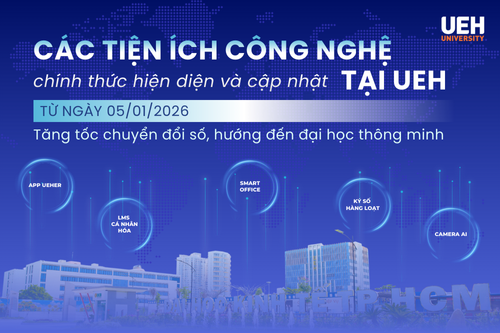
Narrowing Vietnamese Digital Gap towards Digital Transformation of the Economy
17 May, 2022
Successfully narrowing the digital divide is one of the important prerequisites for successful national digital transformation. With this direction, this article introduces the concepts related to the digital gap, the tools to measure the digital distance, the analysis of the digital gap between Vietnam and other countries in the world as well as the digital gap among the domestic localities in Vietnam. From this background, this article presents a system of the solutions with the purpose of narrowing Vietnamese digital divided in both aspects: international and domestic. The system of the solutions is built on the design framework of digital distance scales and the factors that create the environment for these solutions to be implemented effectively and in the right direction.

What is Digital distance?
In accordance with the Law on Information Technology of Vietnam in 2006, the digital gap is the difference in conditions and ability to use computers and information infrastructure to access to information and knowledge sources. In Nielson's study (2006), the digital divide can occur in all three aspects: (1) The digital gap is due to economic conditions; (2) The digital gap is due to usability; and (3) The digital gap is due to access permissions. These are 03 important aspects for which digital distance scales are designed.
To measure the digital gap between countries around the world, various scales have been designed and published by global ICT-related organizations. Table 1 lists some indicators that have been published for this purpose and their current status. Due to the rapid development of the technology sector and its easy-to-change characteristics, a number of indicators, despite being established very early, are no longer applied because they are no longer relevant.
|
No. |
Code |
Full name |
Announcing associations |
Initiating year |
Note |
|
1 |
DAI |
Digital Access Index |
ITU (UN International Telecommunication Union) |
2003 |
Data available in advance of 2006 |
|
2 |
DOI |
Digital Opportunity Index |
WSIS (World Summit on the Information Society) |
2003 |
Data available until 2007 |
|
3 |
KEI |
Knowledge Economy Index |
World Bank Institute |
1995 |
Data available from 1995- 2012, replaced by GKI indicator |
|
4 |
GKI |
Global Knowledge Index |
UNDP (United Nations Development Programme) |
2017 |
Being valid |
|
5 |
ISI |
Information Society Index |
IDC and World Time |
2007 |
Replaced by Chance Index CNTT |
|
6 |
IDI |
ICT Development Index |
ITU
|
2009 |
Data available in advance of 2017 |
|
7 |
|
E-readiness rankings |
EIU (Economist Intelligence Unit) |
2000 |
Replaced by DER target in 2010 |
|
8 |
DER |
Digital economy rankings |
EIU (Economist Intelligence Unit) |
2010 |
Data available in advance of 2014 |
|
9 |
GCA |
ITU Global Cybersecurity Agenda |
ITU |
2007 |
Replaced by GCI |
|
10 |
EGDI |
E-Government Development Index |
UN DESA (United Nations Department of Economic and Social Affairs) |
2003 |
Being valid |
|
11 |
NRI |
The Network Readiness Index |
WEF (World Economic Forum) |
2002 |
Witnessing a change in structure in 2019, being valid |
|
12 |
3i |
Inclusive Internet Index |
EIU |
2017 |
Data available in advance of 2020 |
|
13 |
GCI |
Global Cybersecurity Index |
ITU |
2013 |
The latest announcement was in 2018, the upcoming announcement is in 2021 |
The table listing the indicators that can be used to measure the digital gap in the world. Source: Author's compilation from collected documents
The Digital gap between Vietnam and countries around the world
To describe the digital gap between Vietnam and other countries in the world, this article selects 03 typical scales, including the Internet Universality Index (3i - Inclusive Internet Index); Networked Readiness Index (NRI) and E-Government Development Index (EGDI). The published data of these three indexes shows that Vietnam is currently being ranked in the world average group in terms of digital gap, in the top 50% of the countries in the top of the ranking; namely, ranking 58/120 in the Internet penetration index, that of 63/134 in the NRI connectivity readiness index and that of 88/193 in the EGDI E-government development index. When viewing each individual aspect of the Internet penetration index in detail, the issue of Affordability is Vietnam's weakest (ranking 62/120), the remaining aspects listed as Popularity (ranked 54/120), Relevance (ranking 57/120) and Availability (ranking 53/120) are fairly even. In each aspect of the NRI Connectivity Readiness Index, Vietnam ranks quite low in the areas of Law (ranking 98/134), Inclusiveness (ranking 97/134), Connectivity of Enterprise (ranking 89/134) and Government (ranking 87/134). Our Vietnamese lowest ranking among the component criteria of the E-government development index is on the human resource index (HCI) with the rank of 117/193.
When compared to other countries in Southeast Asia, Vietnam ranks fourth in the region in terms of Internet penetration and Readiness index, after Singapore, Thailand and Malaysia whereas ranking 6/9 countries are included in the electronic development index ranking. The bright spot in these rankings is that Vietnamese position has improved remarkably over time, especially with the E-government index, which has increased from 99th position in 2014 to 88th place in the past year. 2018 and rose 2 places to 86th in 2020. This improvement also reflects the effectiveness of digital transformation policies being applied in Vietnam.
The Digital gap among domestic Provinces/Cities in Vietnam
In the context of world economic integration and during the process of digital transformation, Vietnam has also developed various related indicators to measure the knowledge and the level of information technology use in the country. The table below shows a list of some indicators of Vietnam that are related to information technology and contribute to reflect the current state of the digital gap among localities in Vietnam. From this list of indicators, this article selects the readiness index for ICT development and application for analysis because of its comprehensiveness and the length of time of this publication compared to other indicators.
|
No. |
Code |
Full name |
Announcing associations |
Initiating year |
Note |
|
1 |
ICT Index |
Readiness Index for Vietnam ICT Development and Application |
Ministry of Information and Communications
|
2005 |
Being valid, annual announcement |
|
2 |
EBI |
E-commerce index
|
E-commerce Association |
2012 |
Being valid, annual announcement |
|
3 |
|
IT Industry Index |
Ministry of Information and Communications |
2020 |
A part of report by Vietnam ICT Index, initiated in 2020. |
|
4 |
DTI |
Digital conversion index |
Ministry of Information and Communications
|
Planned in 2021 |
The project determines the assessment set of Digital Transformation Indicators (DTI) has been approved |
|
5 |
ATTT |
Information Security Rating |
Ministry of Information and Communications |
2018 |
Being valid, annual announcement |
Table of some indicators related to information technology and digital gap of Vietnam. Source: Author's compilation from collected documents
The ranking results show a pleasant surprise when the leading economic localities in the country listed as Ho Chi Minh City, Hanoi, and Dong Nai are not the leading localities in terms of information technology. The top three successive years belong to Da Nang. The provinces ranked last on the ranking are Kon Tum, Cao Bang and Lai Chau. The number gap between localities is rather large. In 2020, Lai Chau's ICT Index is only at 0.1253 points compared to the leading locality, Da Nang (0.923 points), counted on all three sides of that index: Technical Infrastructure, Infrastructure IT Human resources and IT Application level.
From the results of the assessment of the digital gap in the country, it can be seen that in order to improve the digital gap compared to other countries in the world, it is necessary for Vietnam to focus on reducing the digital gap among domestic provinces, especially the urban areas, especially mountainous provinces - highland with large urban areas. It goes without saying that narrowing the digital divide with the world can ensure sustainability in development and help the country's successful digital transformation of the economy. Failing to do so, digital transformation will only be successful in the leading cities, therefore, deepening disparities among localities.

The digital transformation gap among mountainous - highland provinces is different from that of large urban areas. Source: Photo collections
Some proposed solutions to narrow the digital divide in Vietnam
The indicators that Vietnam is being weak in the rankings of the indicators reflect the aspects that Vietnam needs to overcome; at the same time, the target of achieving good results is one suggestion for the government to better exploit effective policies. Moreover, it is necessary for Vietnam to focus on reducing the digital divide among domestic provinces to ensure the sustainability of development and help the country's successful digital transformation of the economy. To provide a comprehensive system of solutions built on the design framework of digital distance scales in order to narrow the gap between provinces and between Vietnam and countries around the world. The solution system is designed into eight main groups as follows:
First is a group of legal and institutional solutions, helping to create a safe legal corridor for individuals, businesses and organizations to boldly move towards digital transformation.
Second is a group of solutions for transforming awareness and forming a digital lifestyle in the whole society, approached from three angles: government, business and individual people.
Third is a group of solutions for digital infrastructure development. Investment in building digital infrastructure needs to be performed for both direct digital infrastructure as well as indirect conditions such as energy and environment.
Fourth is a group of solutions to improve knowledge and skills in using information technology as solutions to close the digital gap in usability in digital distance scales.
Fifth is a group of solutions to improve Internet access conditions. This group of solutions includes two directions: (1) The indirect direction through economic growth, income improvement to improve life comfort by technological advances; (2) The direct direction directed through discounts or sponsorships on information technology services or equipment.
Sixth is a group of solutions on the quality of Internet access, in which it is necessary to implement synchronously solutions to increase the quality of connection lines and solutions to increase the quality of information content on the Internet.
Seventh is a group of solutions on international cooperation to narrow the digital gap. This is a group of solutions that can be considered when Vietnam has not become a country with much strength in information technology and can only invest in a few key areas.
Eighth is the group of solutions on network security. Information security, system stability, integrity in narrowing the digital divide can only be achieved when safety in cyberspace is ensured.
In general, the ultimate goal of narrowing the digital divide is not to improve the position on international rankings; rather, to aim at digital transformation and national sustainable development, to improve the citizens’ life quality and to build a modern civilized country.
Please refer to the full article Narrowing Vietnamese Digital Gap towards Digital Transformation of the Economy here. Author: Trần Thị Tuấn Anh, Faculty of Mathematics – Statistics, University of economics Ho Chi Minh City.
This article is in series of spreading researches and applied knowledge from UEH with “Research Contribution For All – Nghiên Cứu Vì Cộng Đồng” message, UEH would like to invite dear readers to look forward to Newsletter ECONOMY NO. #41 “BIG DATA APPLICATION AND AI IN CONSTRUCTING AND MINING THE NATIONAL DATABASE OF REAL ESTATE PRICE IN VIETNAM – PART 1”.
News, Photos: Author group, UEH Department of Marketing – Communication


![[Contribution Research] How Ho Chi Minh City students’ green product consumption is affected by application iCTs innovation nowadays: A case for business to enhance green product consumption by understanding the role of environmental concerns, green consumption value and perceived effectiveness](/images/upload/thumbnail/ueh-thumbnail-639044087939815424.png)



![[Research Contribution] Determinants impacting young consumers purchasing behavioral intention on sustainable fashion: exploration in Ho Chi Minh City](/images/upload/thumbnail/ueh-thumbnail-639035712273480983.png)






![[Research Contribution] What influences UEH students’ attitudes toward the “UEH Zero Waste Campus” project](/images/upload/thumbnail/ueh-thumbnail-639033816949877456.png)